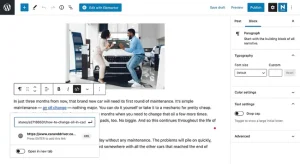TensorFlow is a powerful open-source machine learning framework developed by Google. Here’s a basic guide on how to get started with TensorFlow:
- Installation: First, you need to install TensorFlow. You can do this using pip, Python’s package installer. Open your terminal or command prompt and type:
pip install tensorflow
- Import TensorFlow: Once installed, you can import TensorFlow into your Python script or Jupyter Notebook:
python
import tensorflow as tf
- Create and Run a Simple TensorFlow Program: Here’s a basic example of a TensorFlow program that creates a computational graph and runs it:
python
import tensorflow as tf# Define the computational graph
a = tf.constant(5)
b = tf.constant(3)
c = tf.add(a, b)# Create a TensorFlow session
with tf.Session() as sess:
# Run the computational graph
result = sess.run(c)
print(“Result:”, result)This program creates two constant tensors (
aandb) with values 5 and 3, respectively. It then adds them together to create another tensorc. Finally, it creates a TensorFlow session and runs the computational graph, printing the result. - Define and Train a Model: TensorFlow is commonly used for building and training machine learning models. Here’s a simple example of defining and training a linear regression model using TensorFlow’s high-level API,
tf.keras:pythonimport tensorflow as tf
import numpy as np
np.random.seed(0)
X = np.random.rand(100, 1)
y = 2 * X + 1 + np.random.randn(100, 1) * 0.1
model = tf.keras.Sequential([
tf.keras.layers.Dense(1, input_shape=(1,))
])
model.compile(optimizer=‘sgd’, loss=‘mse’)
model.fit(X, y, epochs=100)
predictions = model.predict(X)In this example, we generate some random data, define a simple linear regression model with one dense layer, compile the model with a stochastic gradient descent optimizer and mean squared error loss function, train the model on the data, and finally make predictions.
- Further Learning: TensorFlow provides extensive documentation and tutorials on its official website, along with a wealth of community-contributed resources. You can explore these resources to learn more about TensorFlow’s capabilities and how to use them effectively.
This is just a brief introduction to TensorFlow. As you delve deeper into machine learning and TensorFlow, you’ll encounter more advanced concepts and techniques for building and training sophisticated models.













